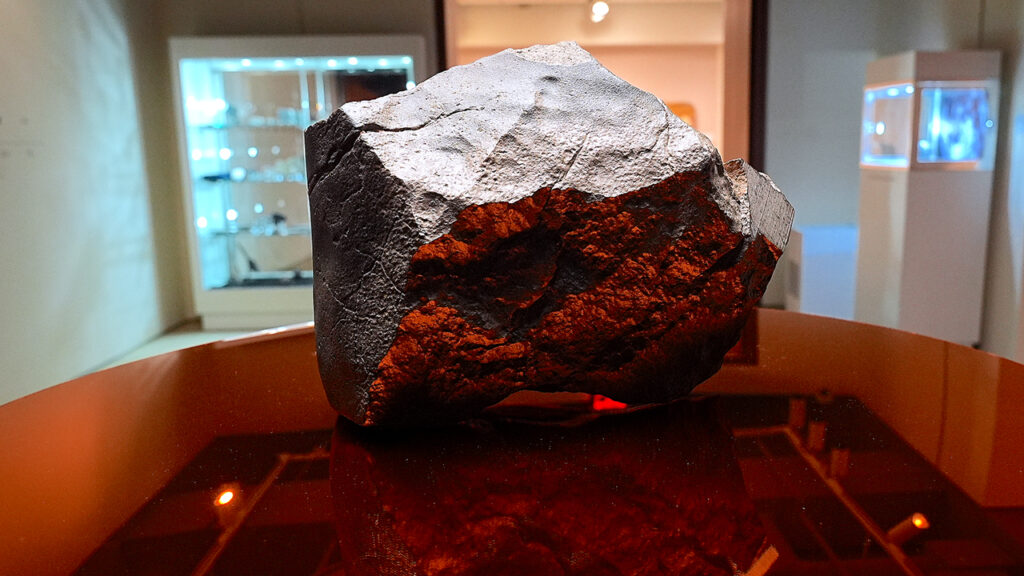
NEW YORK CITY, UNITED STATES - JULY 8: A rare juvenile Ceratosaurus skeleton from the Late Jurassic Era and the largest ever Martian meteorite are on view for the first time at Sotheby's before the auction on July 8, 2025, New York City, United States. A rock is expected to fetch up to $4 million as the biggest chunk of Mars on Earth. (Photo by Selcuk Acar/Anadolu via Getty Images)
One of the most significant extraterrestrial finds in recent history, a Martian meteorite known as NWA 16788, is set to be auctioned by Sotheby’s in New York City on July 16, 2024. This remarkable rock, the largest piece of Mars ever discovered on Earth, is expected to fetch between $2 million and $4 million due to its rarity and scientific value.
The auction will open with a starting bid of $1.6 million. Sotheby’s emphasizes the uniqueness of NWA 16788, which measures approximately 14.75 by 11 by 6 inches and weighs 24.67 kilograms, or about 54 pounds. This meteorite is about 70% larger than the next biggest piece of Martian rock previously found, reinforcing its status as an extraordinary specimen.
A Journey Through Space and Time
NWA 16788 was discovered on November 16, 2023, by a meteorite hunter in the remote Agadez Region of Niger. This rock originated from the Martian surface, ejected by a massive asteroid impact. It then traveled an estimated 140 million miles through the cosmos before entering Earth’s atmosphere and landing in the Sahara Desert.
According to Sotheby’s, of the more than 77,000 recognized meteorites on Earth, only 400 are from Mars, collectively weighing around 825 pounds. This makes pieces like NWA 16788 incredibly rare and highly sought after by collectors and scientists alike.
The meteorite’s exterior features a distinctive reddish-brown fusion crust, which gives it an unmistakable Martian hue. Experts have noted that the surface depressions observed on NWA 16788 were likely formed through frictional heating as it fell through the atmosphere. Notably, the rock exhibits minimal terrestrial weathering, suggesting that its chemical and physical properties have been largely preserved since its arrival on Earth.
Part of a Larger Collection
The auction of NWA 16788 is part of Sotheby’s Natural History sale, which will also showcase other natural wonders, including minerals and fossils. Among these is an exhibition-ready mounted skeleton of a juvenile Ceratosaurus nasicornis, which is estimated to sell for between $4 million and $6 million.
The live auction for the Martian meteorite is set to commence at 10 a.m. on July 16. Sotheby’s anticipates significant interest in NWA 16788, not only from collectors but also from institutions and researchers keen to study this rare fragment of our solar system’s history. As bidding opens at $1.6 million, the auction house is optimistic about the final sale price reflecting the meteorite’s extraordinary value and significance.






